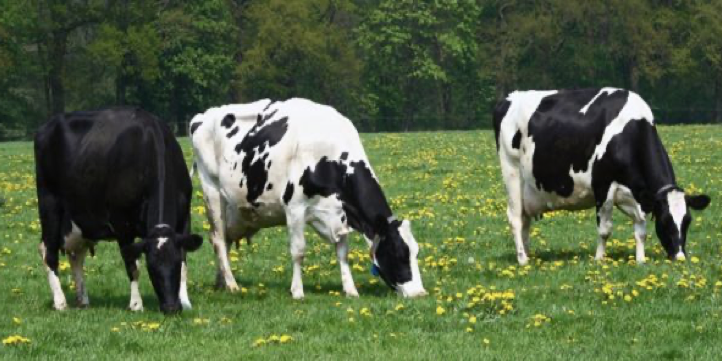CommentsBEGREEN--Change in climate is a common phenomenon in recent times and apart from scientific backing, there is now evident physical evidence. Scientists believe that the major reason for the warming of our planet is human activity.
The release of certain gases into the atmosphere prevents heat arising from the ground to be dissipated into space and a phenomenon is responsible - the greenhouse effect. The gases linked with global warming include water vapor, nitrous oxide, carbon dioxide, chlorofluorocarbons, and methane - which is where the cows come in.
These gases are produced when humans burn fossil fuels in the process of carrying out various industrial and agricultural activities. Basically, this is one of the most detrimental effects of pollution on our environment.
In addition to the role humans play, the earth also contributes its quota thanks to certain natural processes that boost the production of greenhouse gases and increases the warming trend.
Various agricultural practices which are all directed at food production for humans serve as one of the major reasons for climate change. Components of the agricultural productivity niche such as fertilizers - both organic and inorganic release nitrous oxide which is one of the most powerful greenhouse gases into the atmosphere.
Similarly, livestock animals play a very important role in terms of production of methane - another greenhouse gas and this brings us to the next point.
What Exactly are Cows Doing That is Hastening Climate Changes?
Of all the greenhouse gases, two very deadly ones come from animal agriculture - nitrous oxide and methane. Methane which is mainly produced by manure storage and enteric fermentation has been discovered to have an effect on global warming that is 28 times greater than the effect of carbon dioxide.
Nitrous oxide, on the other hand, arises from the use of organic/inorganic fertilizers and manure storage. It has been discovered that this molecule has a global warming potential that is 265 times higher than carbon dioxide. The comparison to carbon dioxide is because it is the standard for measuring global warming potential.
In the United States alone, statistics show that there are about 94.8 million cattle and calves and this number is definitely on the increase. Furthermore, cattle are known for how much food they consume and consequently, the enormous amount of waste that they pass.
Apart from the emissions from animal waste products, feed production is another aspect notorious for its contribution to these emissions.
Soil carbon dioxide emissions come from soil carbon dynamics (such as mineralization of soil organic matter, decomposing plant residue and land-use change, etc. ), use of fossil fuel for powering farm equipment, and application of synthetic fertilizers and pesticides.
The exhaust from burning fossil fuels in engines leads to air pollution which has an immediate negative impact on human health as well as the environment.
Manure Storage
Manure serves as a source of emission of both nitrous oxide and methane gas. However, the quantity emitted is directly linked to management type, environmental conditions and the composition of the manure itself.
The nitrogen content and organic matter present in the excreta are some of the main factors that also influence the emission of methane and nitrous oxide respectively. Storing liquid manure otherwise known as slurry in a tank or lagoon provides an anaerobic environment that boosts the production of methane.
Furthermore, storing it for long periods and under wet and warm conditions can further lead to an increase in emissions.
For Nitrous oxide production, a mix of aerobic and anaerobic conditions is required for it to be produced. Therefore, for manure deposited on pasture or handled as a solid, the production of nitrous oxide is maximum while there is little or no emission of methane.
Its generation is through both the denitrification and nitrification processes of the Nitrogen that are in the manure and it is mostly found as ammonia and ammonium in the inorganic form of proteins in the organs form.
Nitrification occurs in aerobic conditions and converts ammonium and ammonia to nitrites and then nitrates while denitrification requires anaerobic conditions and converts the nitrates previously produced to nitrogen gas and nitrous oxide.
Enteric Fermentation
Enteric fermentation is a part of the ruminant digestive process and involves the breakdown and fermentation of plant biomass consumed by cattle. It occurs by the action of bacteria, protozoa, and fungi which can be found in the rumen or forestomach of the animal on the food.
The plant biomass which has been broken down is then converted into volatile fatty acids that go through the rumen wall to the liver via the circulatory system. This is one of the major sources of energy needed by the animal and allows for high conversion efficiency of semi-cellulose and cellulose.
The gaseous waste products - namely methane and carbon dioxide are expelled from the rumen mainly via eructation. The amount of methane emitted basically depends on feed intake and digestibility.
Going by this information, we can safely conclude that cows actually play a part in global warming and it just may be more significant than we think. Therefore, discovering methods of reducing these emissions should be of very high priority.
(Charlie Gray is a writer and lover of pets, especially dogs. He also loves to paint.)
-cw














